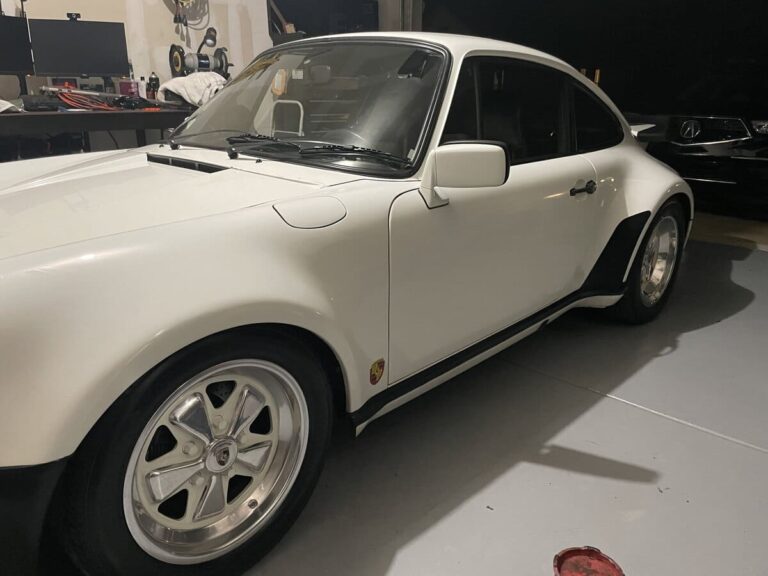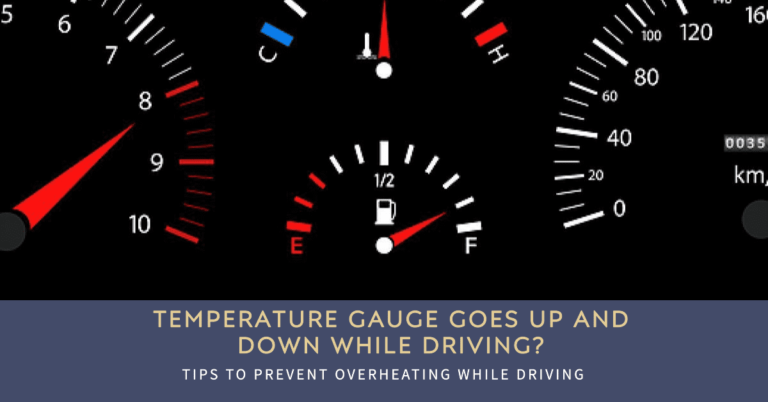Does Adding a Cold Air Intake Void Your Car’s Warranty?

So you just got a new car or truck and want to make some aftermarket modifications like adding a cold air intake. But will that void your manufacturer’s warranty coverage?
It’s a common question for gearheads and one surrounded by a lot of uncertainty. In short – maybe, but not always.
In this comprehensive guide, we’ll cover:
- What exactly a cold air intake is and its benefits
- Laws and regulations around aftermarket parts and warranties
- Steps to determine if an intake will void your car’s warranty
- Installation and documentation tips to keep warranty intact
- What to do if your dealer denies a claim after installing an intake
And more. Let’s dive in.
Table of Contents
What Exactly is a Cold Air Intake?
First things first – what is a cold air intake (CAI) and why do people install them?
A CAI replaces your engine’s stock air intake system with an aftermarket one designed to pull in cooler external air. It does this by relocating the air filter outside of the hot engine bay area.
Benefits of upgrading to an aftermarket cold air intake include:
- Increased horsepower – due to lower air intake temperatures and less restrictive airflow
- Improved throttle response and acceleration
- Better fuel efficiency – CAIs optimize the air to fuel ratio
- Engine sound enhancement – Hear turbo or supercharger-like whooshes
With benefits like these, it’s easy to see why gearheads love installing intakes on their hot rods. But does this popular mod void manufacturer warranties even on new cars? We’ll cover that next.
Do Aftermarket Parts Like Intakes Actually Void Warranties?
This debate involves a piece of legislation called the Magnuson-Moss Warranty Act. In a nutshell, it says that manufacturers and dealers cannot automatically void a vehicle’s warranty simply because aftermarket equipment was installed.
For example, if you put a cold air intake on your new Ford Mustang, the dealer can’t void the entire car’s warranty outright. However, there are caveats:
- The Magnuson-Moss Act only applies to emission performance warranties – not other coverage
- Manufacturers can deny specific claims if an aftermarket part caused related damage
We’ll unpack examples of this shortly when we cover determining actual warranty voiding. But first, understand most manufacturers discourage modifications like air intakes in owner’s manuals. Why?
Dealers claim aftermarket parts increase the chance of engine damage. And if that damage happens, they want the right to finger the mod as the cause and deny related repairs under warranty.
But aftermarket manufacturers counter that properly engineered parts like intakes improve performance without extra risk when installed correctly.
This disagreement leads to the ongoing controversy. And determining exactly how an aftermarket cold air intake affects your specific car warranty depends on several individual factors.
Will a Cold Air Intake Actually Void Your Car’s Warranty?
Whether an engine modification like a cold air intake voids your car’s warranty depends on these key specifics:
Your vehicle make, model, and year – Some manufacturers are mod-friendlier than others when it comes to warranties. Luxury brands like Porsche are usually far less modification-tolerant than mass market automakers. And policies can differ across model lineups and model years.
Engine configuration – Turbocharged, supercharged, electric, and high performance engines often fall under greater scrutiny when modified. Even simple air intake swaps might raise warranty issues on temperamental powerplants.
Emissions equipment – Anything adjusted under the hood that changes air to fuel ratios has the highest likelihood of voiding emission component warranties. Intakes directly impact this.
Where the car was sold originally – Warranty magnanimity depends partly on regional consumer laws. Policies around aftermarket parts differ in California vs the Midwest vs Australia vs Dubai, for example. Know your locality’s posture.
Dealership service philosophy – Some dealers take harder lines on modifying vehicles still under the factory warranty. Their threshold for voiding related claims can be very low compared to more mod-friendly service departments.
Intended vehicle use – Daily driven economy cars receive more warranty consideration than raced and abused weekend toys when mods raise issues. Use matters.
And those are just a few variables that determine impacts of engine bay alterations like sticking a big cold air intake system where the stock airbox used to live.
So if you’re wondering whether adding a performance CAI will void your car’s warranty, there’s no universal fit-all answer. It depends on your exact ride and situation.
Next we’ll cover steps to determine your specific risk profile when considering an air intake upgrade.
How to Check if an Intake Will Void Your Warranty
Given all the mitigating factors around aftermarket parts and warranty claims, here is our recommended process to determine if adding a cold air intake will void your vehicle’s warranty:
1. Check your owner’s manual – Manuals often include language about modifications affecting warranty coverage. See exactly what it says about parts like air intake components.
2. Contact your dealership – Call the dealer service department and ask directly: “If I install a cold air intake, will it void my powertrain warranty?” Get their official stance.
3. Research forums – See what owners of your specific make/model/year report about modifying intakes while still under factory warranty periods. Learn from their experiences.
4. Consult your tuner – Ask the shop helpling you pick and install your upgraded intake about how it may affect warranty eligibility. They should know exactly based on your car.
5. Review warranty docs – Read the fine print! Your actual vehicle warranty paperwork may have clauses that govern non-OEM parts replacements.
Doing this upfront research lets you determine your actual risk profile when moding your ride’s air intake system. Our next section covers tips to keep your warranty intact after installing a cold air induction kit.
How to Install a Cold Air Intake Without Warranty Issues
Once you’ve researched and confirmed adding a performance cold air intake won’t outright void your car’s warranty, use these best practices for worry-free modification:
Choose a reputable CAI brand – Well-engineered intake systems from manufacturers like Injen, K&N, Mishimoto, or AEM won’t introduce abnormal risk or reliability issues. Avoid no-name eBay specials.
Have a shop install it – Even if you plan to do most of your own wrenching, consider paying pros to install your intake cleanly to avoid any vacuum leaks, airflow abnormalities, or engine faults from DIY mistakes.
Get a professional tune – Pair air intake upgrades with an ECU tune to optimize all air/fuel parameters and operating conditions for your engine’s new breathing profile. Avoid “one-size-fits-all” programmer presets.
Keep OEM intake parts – Store your factory air box, tubing, and components. That provides an easy warranty-friendly restoration option if any related issues later arise.
Maintain service records – Keep detailed logs of all installation steps, tuning profiles, and part serial numbers. This protects you if dealers blame unrelated issues on your intake down the road.
Smart modification best practices combined with model-specific warranty research helps ensure CAI upgrades don’t void eligibility. But what if you follow all the rules and still have a claim denied?
What to Do if Your Dealership Denies an Intake-Related Warranty Claim
Despite your due diligence, dealerships might still falsely attribute unrelated issues to your aftermarket cold air intake and deny covered repairs. Here’s how to respond:
Get the denial reason in writing – Ask the service manager to formally document exactly why they believe your intake directly caused the failure or damage. Specificity is key.
Demand evidence – The burden of proof is on the dealer, not you. Require they empirically demonstrate how the intake component clearly led to the broken or faulted part they want to exclude from warranty repair coverage.
Refute unsupported claims – If their “proof” is weak or assumptions about causation questionable, argue against their denial rational using outside experts plus your strong documentation.
Threaten legal action – Politely share that you are prepared to get lawyers involved if needed based on the Magnuson-Moss Act’s provisions for aftermarket parts if they will not reasonably settle the claim dispute.
Escalate up the dealer chain – If your service department won’t budge after presenting evidence refuting their denial accusations, firmly but professionally ask to have corporate buyer reps from the car company get involved to arbitrate.
With the right documentation and confident pushback, dealers often fold rather than get embroiled in legal battles over warranty denials involving aftermarket parts like cold air intakes they can’t conclusively prove caused damages.
The Bottom Line – Do Cold Air Intakes Void Warranties?
So after all this – back to our original question:
Will adding an aftermarket cold air intake void your car’s manufacturer warranty?
The short answer is maybe…but not automatically or outright according to consumer protection laws.
However, on late model vehicles still under comprehensive factory coverage, even simple mods like swapped air filters and intake tubing make warranty claims involving affected systems less certain.
So while intakes alone won’t nullify the entire vehicle warranty, their installation does increase scrutiny and burden of proof obligations if related components later fail.
In the end, altering key engine systems while still under warranty periods is always a calculated risk. Make information-based decisions weighing potential performance gains against possible coverage impacts for your specific ride’s situation and your own tolerance to hassle if issues arise later.
Modifying modern cars for more horsepower and thrills while maintaining factory defect repair rights remains challenging. Carefully consider how aggressively you want to tune and upgrade your engine’s lungs during ownership phases still covered by manufacturers – especially emission equipment.
Or consider waiting until later in your car’s lifecycle to customize intake flow when the stakes of voiding warranty claims on a single compromised component matter less against entire vehicle value.
In Closing
We hope this guide provided useful context about popular “will it void my warranty” modding questions. And gave actionable guidance if you decide to install a high-flow cold air intake to feed your hungry engine.
As always when modifying late-model vehicles still under factory coverage considerations, move cautiously and deliberately. The aftermarket offers limitless tuning possibilities, but OEMs promise only limited defect protections even to stock vehicles.
Understanding exactly where you fall in between takes research and realistic assessments of risk – not just part-picking fantasies. Any car can be spectacularly altered to suit an owner’s wildest power dreams, but factory accountability for breakdowns naturally decreases along that path.
Choose yours wisely and happy performance wrenching!







